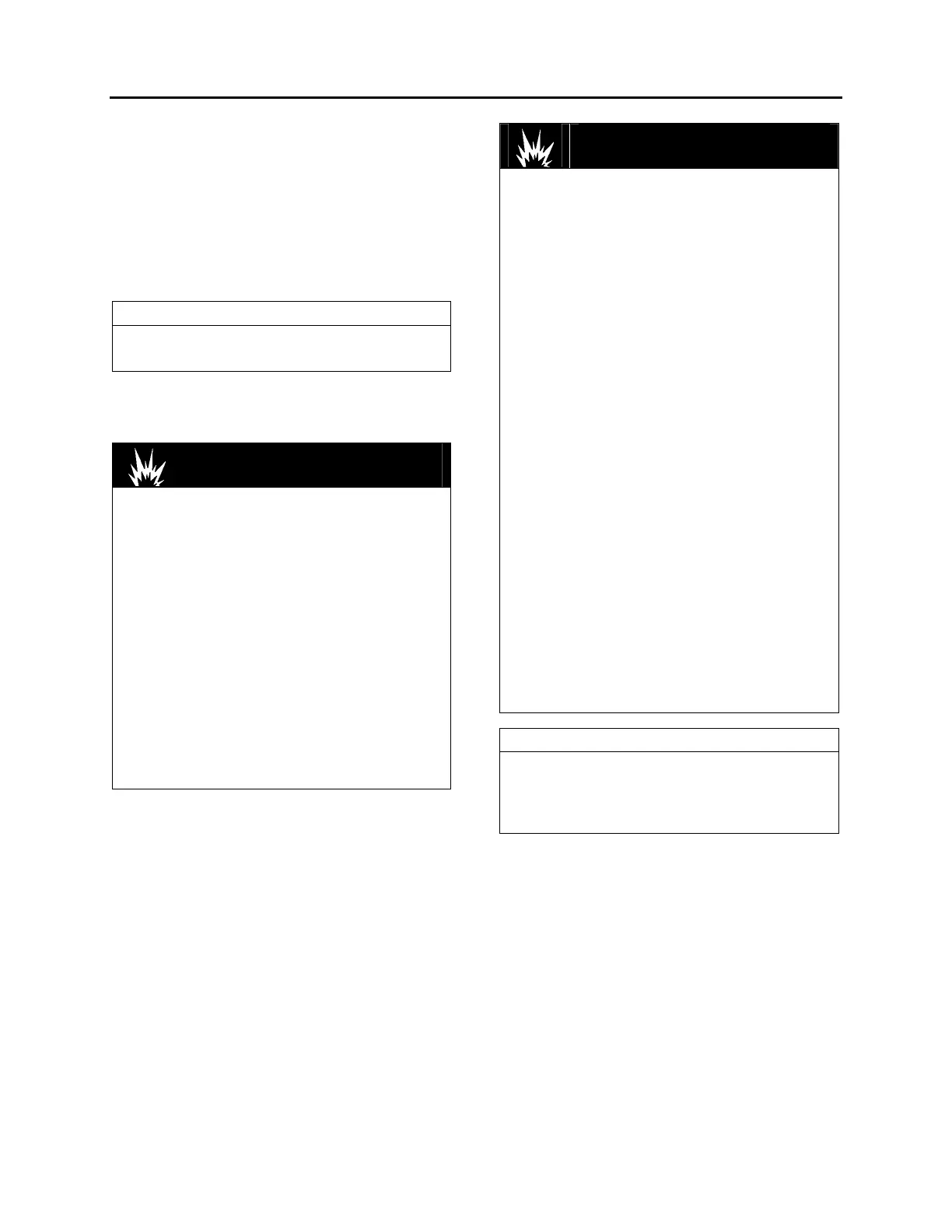Section 06: ELECTRICAL
PA1553
19
temperature of 70ºF (21ºC), voltage reading
should be less than 0.3 volt. If the voltage
reading exceeds 0.3 volt, there is excessive
resistance in this circuit.
2. Check voltage drop between the positive
battery terminal and the starter positive
terminal stud while the motor is operated. If
the reading is more than 2.5 volts, there is
excessive resistance in this circuit.
NOTE
If it is necessary to extend the voltmeter lead
for this test, use a #16 (AWG) or larger wire.
3. Check voltage drop between the starter
housing and a good ground on the vehicle.
The reading should be less than 0.2 volt.
DANGER
Any procedure other than the following could
cause personal injury or damages to the
charging system resulting from battery
explosion or electrical burns.
Wear adequate eye protection when working
on or near the batteries. Ensure that metal
tools or jumper cables do not contact the
positive battery terminal (or a metal surface in
contact with it) as a short circuit will result. Do
not attempt to jump start a vehicle suspected
of having a frozen battery because the battery
may rupture or explode. Both the booster and
discharged batteries must be treated carefully
when using jumper cables. Follow exactly the
procedure outlined later in this section, being
careful not to cause sparks.
3.6 BATTERY CHARGING
The batteries used on this vehicle can be
charged either on or off the vehicle; however,
when they are removed from the vehicle, it is
recommended that an adapter kit, which is
available from any "A/C DELCO" dealer, be used
in charging sealed-terminal batteries. Use the
booster terminals to charge the batteries when
they are left on vehicle and make sure that the
ignition key switch is set to the “On”
position.
The alligator clamps of the tester or charger must
be placed between the terminal nuts and the
lead pads of the terminal studs (Fig. 17) after the
vehicle cables are detached. The alligator
clamps should make firm contact with the lead
pads.
DANGER
During charging of the batteries, an explosive
gas mixture forms in each cell. Part of this gas
escapes through the vent holes and may form
an explosive atmosphere around the battery
itself if ventilation is poor. This explosive gas
may remain in or around the battery for
several hours after it has been charged.
Sparks or flames can ignite this gas causing
an internal explosion, which may shatter the
battery.
1. Do not smoke near a battery which is
being charged or which has been recently
charged.
2. Do not break live circuits at battery
terminals because a spark usually occurs
at the point where a live circuit is broken.
Care must always be taken when
connecting or disconnecting booster leads
or cable clamps on chargers. Poor
connections are a common cause of
electric arcs, which cause explosions.
3. The electrical system on this vehicle is
negative ground. Installing the batteries
with the positive terminals grounded or
incorrect use of the booster battery and
jumper cables will result in serious
damage to the alternator, batteries and
battery cables.
NOTE
If this connection cannot be made because of
the alligator clamp design, the load value for
testing must be reduced from 290 to 260
amperes.
On rare occasions, such as those that occur
following prolonged cranking, the green dot in
the test indicator may still be visible when the
battery is obviously discharged. Should this
occur, a boost charge of 20 amperes-hour is
recommended. Under normal operating
conditions, do not charge battery if the green dot
is visible. The battery should never be charged if
the test indicator (hydrometer) is clear or light
yellow. If this occurs, replace the battery.
A charge rate between 3 and 50 amperes is
generally satisfactory for any maintenance-free
battery as long as spewing of electrolyte does
not occur or the battery does not feel excessively
hot (over 125ºF (52ºC)). If spewing or violent

